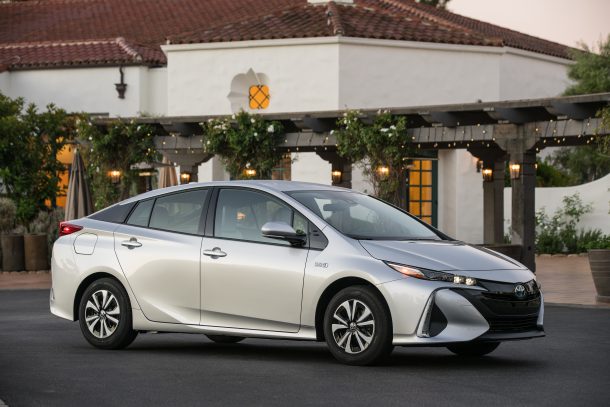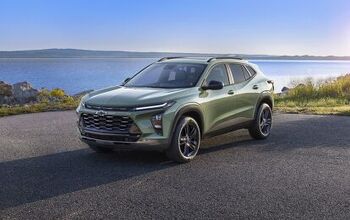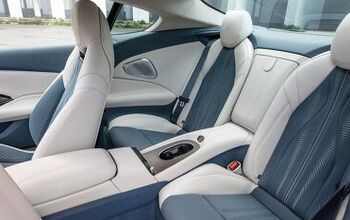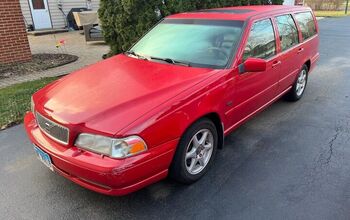TTAC News Round-up: You May Only See Ads for the Prius Prime If You'll Actually Buy One

Toyota’s going to market the new Prius Prime with laser-like precision. Is it because they want to embrace cutting-edge advertising methods, or is it because they don’t see it as a vehicle with particularly broad appeal?
That, BMW thinks it might want to keep an unpopular model around for another generation, Volvo issues a voluntary recall on seat belts, and Toyota and Nissan agree that their prospects have looked better in North America… after the break!
Toyota uses targeted TV to sell the Prius Prime
Instead of running a national television advertising campaign, Toyota’s media plan is much more focused and includes one of the company’s largest “addressable TV” purchases in history.
Automakers like targeted advertising because they can zero in on households with the ideal incomes, interests, and expiration dates on their car leases. Toyota likes addressable TV because it means it can target Prius Prime ads at college-educated people, environmentalists, and those between 18 and 49 with household incomes above $75,000.
While brands have always endeavored to reach their customer base through advertising, addressable TV allows television to become nearly as selective as the internet in terms of who sees what. As automakers frequently have various products aimed at drastically different customers, they’ve become early adopters of the technology.
Advertising Age writes:
Other automakers that have recently made addressable buys include Hyundai, which is currently using the method to run ads for its new luxury Genesis brand by targeting households with incomes of $100,000 or more. “We use it because we understand that that’s one of the most targeted forms of getting a big screen to light up with our message in the exact households you want it to,” said Hyundai Motor America Chief Marketing Officer Dean Evans. “We understand it’s got its limited reach today,” he added. But “we think we have to go there just to become smarter marketers.”
The Prius Prime starts at $27,100 before shipping, and is eligible for a federal tax credit of $4,500. If you are an 18- to 49-year-old environmentally minded professional, expect to see ads for Toyota’s new plug-in.
BMW probably won’t abandon the i3 just yet
It seems that BMW is going to continue on with the i3, despite sales being well below expectations.
When Automotive News asked Heinrich Schwackhoefer, i3 project manager, if a replacement is in the cards, he said, “I firmly expect that. It’s not the sentiment within the company that it’s been a failure — absolutely not at all.”
However, failure may be an apt word, as sales have been dismal for the subcompact EV. BMW only sold 443 of them in the U.S. last month and the i3 is routinely outsold by Nissan’s Leaf and more expensive offerings from Tesla. Still, the little electric has made more of a home for itself in densely populated cities than the Mitsubishi i MiEV ever managed.
“The “i’ subbrand is stable and you can count on a successor to the i3, but I cannot say when that will be,” Schwackhoefer said.
Volvo voluntarily issues seatbelt recall
Volvo is recalling about 74,000 late-model vehicles in the U.S. and another 5,000 in Canada. The company is concerned that a issue with the seat belts might inadequately restrain passengers in the event of a crash.
The affected vehicles include Volvo’s S60, S90, V60, XC60 and XC90 from the 2016-17 model years. Volvo spokesman Jim Nichols stated the problem is caused by a connecting pin in the buckle that could cause the seat belt to work inadequately during an impact. Nichols said the move is mainly precautionary and no incidents have been reported.
Volvo owners can take their vehicles into a dealership for an brief inspection. If needed, dealers will replace the affected part free of charge.
Nissan and Toyota think the U.S. market is tapped out
Toyota and Nissan are in agreement that sales in the United States have reached the high water mark. Automotive News reports that Toyota Motor Corp. has scaled back its forecast for North American sales by 60,000 vehicles this year. This reduction is heavily influenced by North America’s gradual turn away from economical cars and a return to SUVs, crossovers, and trucks.
Meanwhile, Nissan has continued offering heftier incentives to boost its sales. While the incentives worked mainly as intended, the company still reported a 19-percent decrease in operating profit for the third quarter. Autodata Corp estimates that Nissan is spending $3,607 per vehicle while Toyota’s incentives stand at $2,270.
Automotive News writes:
“The market turned out to be somewhat weaker,” Takahiko Ijichi, a Toyota executive vice president, told reporters Tuesday after the carmaker reported a 43 percent plunge in quarterly operating profit. The North American market “really requires very careful managing going forward,” he said.
[Images: Toyota; BMW Group; Rob and Stephanie Levy/ Wikimedia Commons ( CC BY 2.0)]

A staunch consumer advocate tracking industry trends and regulation. Before joining TTAC, Matt spent a decade working for marketing and research firms based in NYC. Clients included several of the world’s largest automakers, global tire brands, and aftermarket part suppliers. Dissatisfied with the corporate world and resentful of having to wear suits everyday, he pivoted to writing about cars. Since then, that man has become an ardent supporter of the right-to-repair movement, been interviewed on the auto industry by national radio broadcasts, driven more rental cars than anyone ever should, participated in amateur rallying events, and received the requisite minimum training as sanctioned by the SCCA. Handy with a wrench, Matt grew up surrounded by Detroit auto workers and managed to get a pizza delivery job before he was legally eligible. He later found himself driving box trucks through Manhattan, guaranteeing future sympathy for actual truckers. He continues to conduct research pertaining to the automotive sector as an independent contractor and has since moved back to his native Michigan, closer to where the cars are born. A contrarian, Matt claims to prefer understeer — stating that front and all-wheel drive vehicles cater best to his driving style.
More by Matt Posky
Latest Car Reviews
Read moreLatest Product Reviews
Read moreRecent Comments
- ChristianWimmer Exterior and interior look pretty flawless for such a high mileage car. To me this is an indication that it was well-maintained and driven responsibly. It’s not my cup of tea but it’s bound to find an enthusiastic owner out there.And with ANY car, always budget for maintenance.
- Fred I'm a fan and watch every race. I've missed a few of the live races, but ESPN repeats them during more reasonable hours.
- Mikesixes It has potential benefits, but it has potential risks, too. It has inevitable costs, both in the price of the car and in future maintenance. Cars with ABS and airbags have cost me at least 2000 bucks in repairs, and have never saved me from any accidents. I'd rather these features were optional, and let the insurance companies figure out whether they do any good or not, and adjust their rates accordingly.
- Daniel Bridger Bidenomics working.
- Michael Gallagher Some math! The cost to produce US Shale derived oil is between $35 to $55/bbl. Middle East oil cost about $15/bbl. If OPEC wanted, they could produce more , driving oil prices below our costs and decimating our domestic industry. We have whispered in their ear that they should endeavor to keep the price above our cost, in exchange for political, economic and security favors. Case in point, during COVID when gas dropped below $2/gal , producers were losing money, Trump had to approach the Saudis requesting them to cut production to raise the oil price above our cost. If the global oil industry was truly competitive, our industry would be out of business very quickly due to our much higher cost of production. Those that long for those covid prices need to realize it would be at the expense of our domestic industry.





































Comments
Join the conversation
The i3 is a good example of why the traditional automakers haven't yet been able to compete with Tesla. They are don't compete head-on their gas-powered cars, so they sell us under-powered ugly machines in the hope that nobody will buy them.
The i3 may have an important role as a production test bed for carbon fiber construction for BMW, regardless of sales. If they believe that CFRP and electric are important trends in the industry (and those seem like good bets), then staying in the game is important. Think of the first several years of Prius sales: they weren't good, but Toyota believed in the principle, and it later paid off.